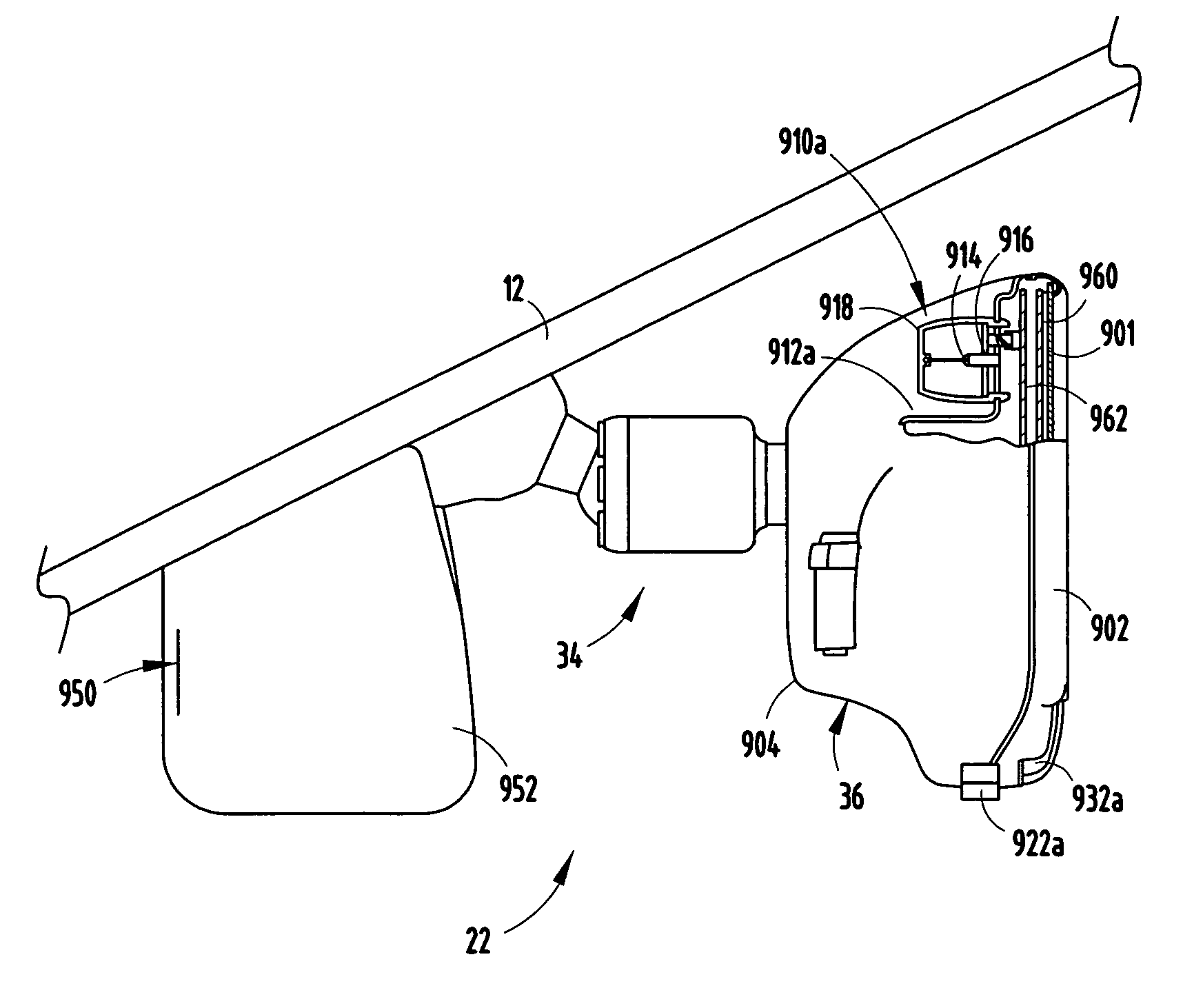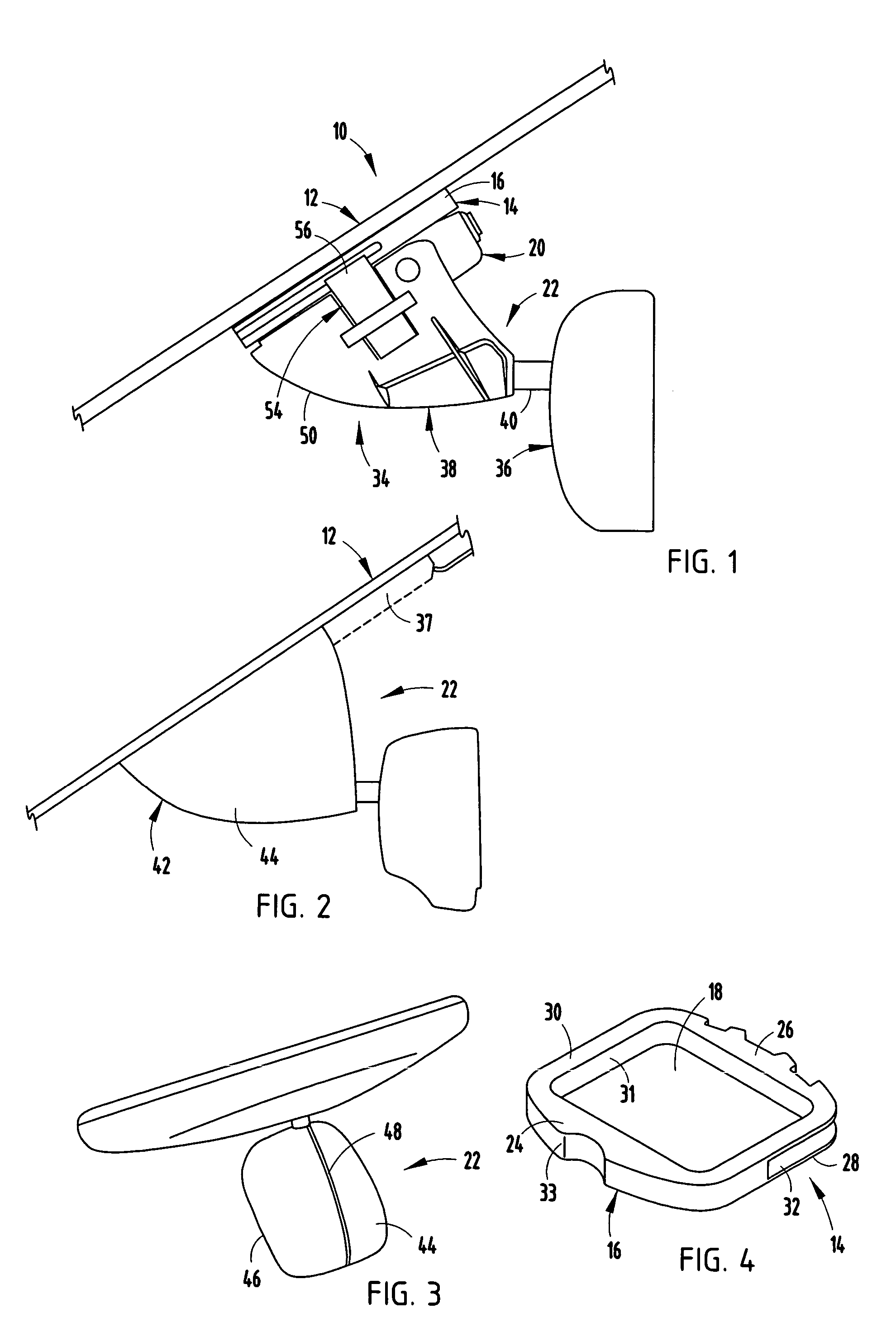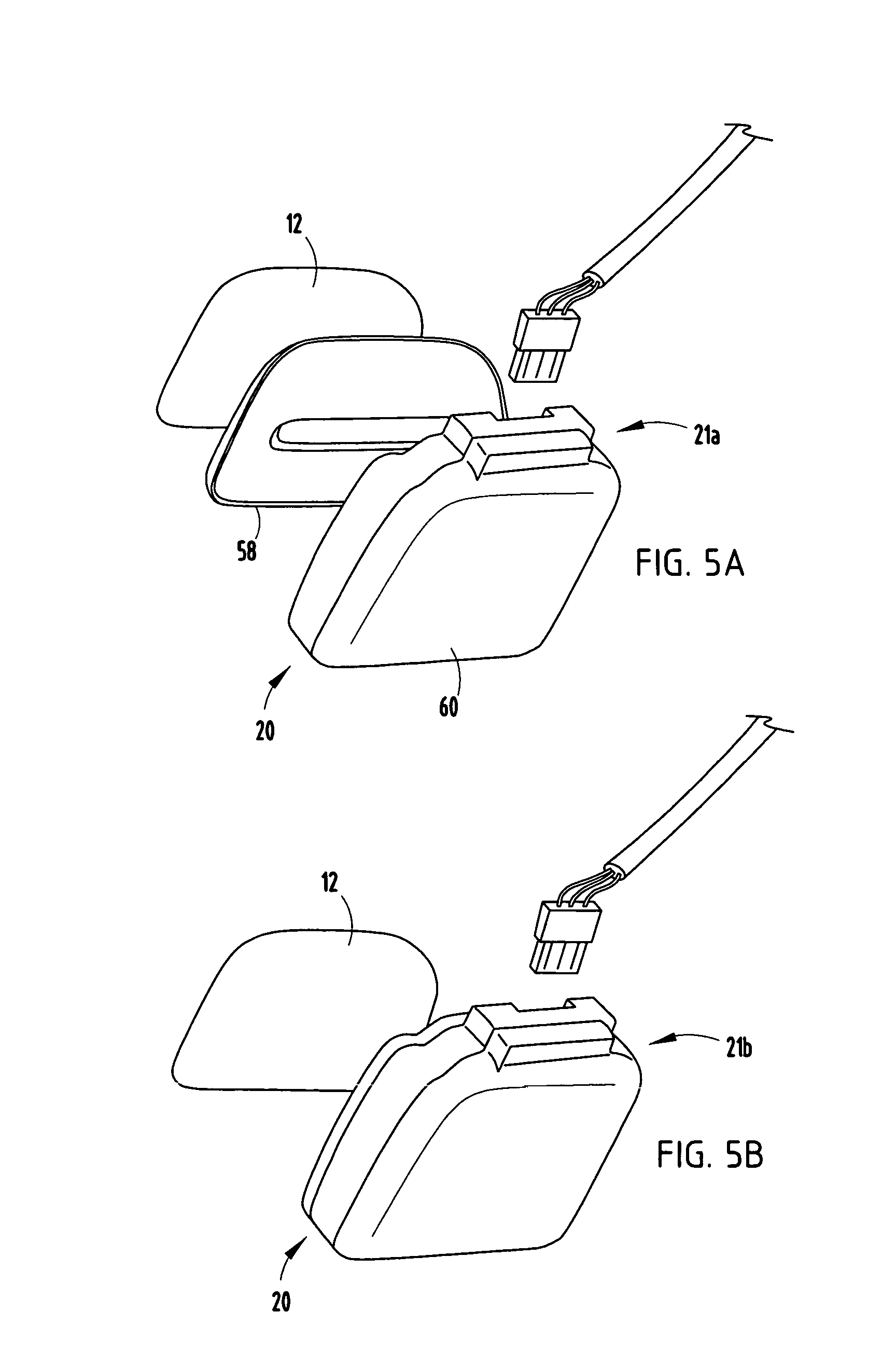Rearview mirror system for accommodating a rain sensor
a technology for rearview mirrors and rain sensors, applied in the direction of optical radiation measurement, instruments, electric devices, etc., can solve the problems of varying the amount of rain falling on the windshield, relatively expensive processes, and dramatic rainfall rates
- Summary
- Abstract
- Description
- Claims
- Application Information
AI Technical Summary
Benefits of technology
Problems solved by technology
Method used
Image
Examples
first embodiment
[0063]In the illustrated example, the interior rearview mirror system 22 of the present invention is connected to the button 14 by sliding the mounting foot 38 onto the button 14 as described above. Furthermore, the ribs 66 of the interior rearview mirror system 22 slide below the ledges 61 of the rain sensor 20 to thereby position the ribs 66 and the ledges 63 of the interior rearview mirror system 22 between the windshield 12 and the ledges 61 of the rain sensor 20. Thereafter, the mounting bracket cover 42 is positioned over the mounting bracket 34 of the interior rearview mirror system 22, the button 14 and the rain sensor 20. Preferably, the ledges 63 of the interior rearview mirror system 22 do not contact the ledges 61 of the rain sensor 20 once the interior rearview mirror system 22 is connected to the button 14 and before the interior rearview mirror system 22 is disconnected from the button 14.
[0064]As the illustrated interior rearview mirror system 22 is disconnected from...
second embodiment
[0068]In the illustrated example, the rain sensor 20a is operatively coupled to the windshield 12a independent of the interior rearview mirror system 22a. However, as the interior rearview mirror system 22a is detached from the button 14a, the ledges 63a of the interior rearview mirror system 22a engage the ledges 61a of the rain sensor 20a, thereby disconnecting at least a portion of the rain sensor 20a from the windshield 12a. In the visual, rear viewing and rain sensing system 10a for the vehicle, the ledges 61a of the rain sensor 20a could be located within channels 80 that accept the hooks 78 of the spring clip 70 as the interior rearview mirror system 22a is disconnected from the button 14a.
[0069]The reference numeral 10b (FIGS. 13-15A) generally designates another embodiment of the present invention, having a third embodiment of the visual, rear viewing and rain sensing system for the vehicle. Since visual, rear viewing and rain sensing system 10b is similar to the previousl...
third embodiment
[0070]The illustrated spring clip 70b of the visual, rear viewing and rain sensing system 10b for the vehicle is snap fit into position after the interior rearview mirror system 22b has been connected to the button 14b. The legs 72b, 74b of the spring clip 70b include shelves 82 wherein upper portions of the legs 72b, 74b are spaced further apart than lower portions of the legs 72b, 74b. Furthermore, the sides of the shell 50b of the mounting foot 38b include downward facing notches 84 configured to engage the shelves 82 of the spring clip 70b. After the interior rearview mirror system 22b has been connected to the button 14b, the spring clip 70b is fit over the mounting foot 38b of the mounting bracket 34b. Therefore, the shelves 82 of the spring clip 70b snap into position under the notches 84 of the mounting foot 38b and the hooks 78b of the spring clip 70b snap under the ledges 61b of the rain sensor 20b. Thereafter, the ledges 63b of the spring clip 70b pull at least a portion ...
PUM
 Login to View More
Login to View More Abstract
Description
Claims
Application Information
 Login to View More
Login to View More - R&D
- Intellectual Property
- Life Sciences
- Materials
- Tech Scout
- Unparalleled Data Quality
- Higher Quality Content
- 60% Fewer Hallucinations
Browse by: Latest US Patents, China's latest patents, Technical Efficacy Thesaurus, Application Domain, Technology Topic, Popular Technical Reports.
© 2025 PatSnap. All rights reserved.Legal|Privacy policy|Modern Slavery Act Transparency Statement|Sitemap|About US| Contact US: help@patsnap.com



